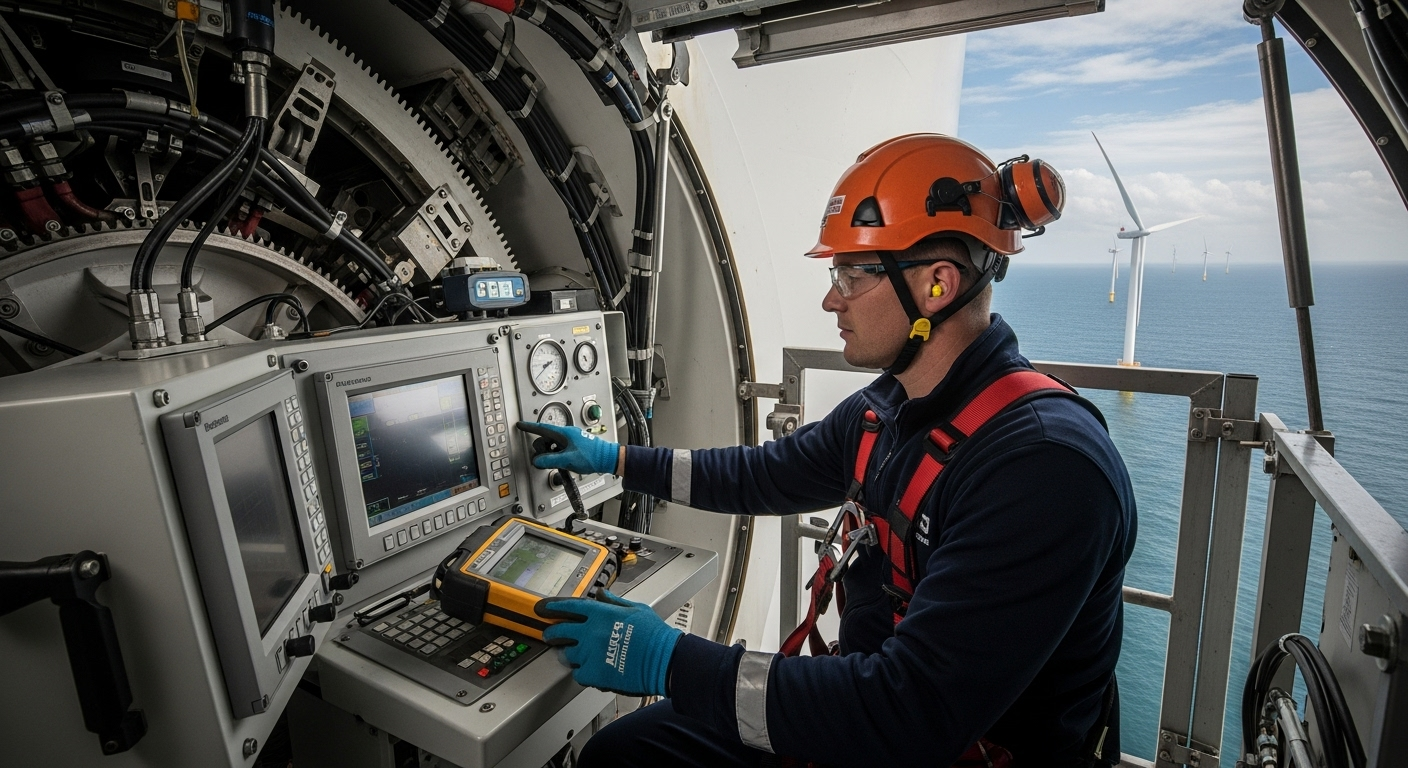The offshore wind industry is growing rapidly, creating exciting opportunities for anyone considering a career as a wind turbine technician. As the global push for renewable energy continues, offshore wind turbine companies are expanding, and the demand for skilled technicians has never been higher. For those interested in this path, understanding the role, training requirements, and career prospects is essential.
Understanding the Role of a Wind Turbine Technician
An offshore wind turbine technician is responsible for the installation, maintenance, and repair of turbines located in marine environments. These technicians ensure that turbines operate efficiently and deliver maximum power output. The work can be physically demanding, often requiring technicians to climb turbines more than 300 feet tall and carry out complex repairs while navigating the challenges of offshore weather. At the same time, the role calls for a strong technical foundation in electrical and mechanical systems, along with the ability to work safely under strict protocols. Most technicians work in teams, supporting each other to maintain high safety standards and keep operations running smoothly.
Education and Training for Offshore Wind Careers
For most wind turbine technician jobs, a high school diploma is the minimum requirement. However, many offshore wind turbine companies prefer candidates with post-secondary education in electrical or mechanical engineering. Vocational schools and community colleges often provide courses in wind energy technology, giving candidates a competitive edge. Apprenticeship programs are another popular option, as they offer practical, hands-on training under the guidance of experienced technicians. These apprenticeships are especially valuable for people with no prior experience, since they provide the skills and certifications needed to begin working in the field.
In addition to formal education, many aspiring technicians pursue certifications that validate their expertise. Training covers not only electrical and mechanical systems but also safety measures such as working at heights and conducting offshore rescues. These programs are designed to prepare technicians for the unique demands of offshore wind turbine maintenance companies.
Skills Needed to Succeed
Success in this career requires a blend of technical knowledge and personal qualities. A wind turbine technician must be comfortable working with complex electrical and mechanical systems while also being able to solve unexpected problems quickly. Clear communication skills are necessary for coordinating wit
h team members and supervisors, especially during maintenance operations or emergency repairs. Physical endurance is also vital, since technicians often work in demanding environments that require climbing, heavy lifting, and extended hours offshore. Adaptability and resilience play a key role as well, as offshore schedules and weather conditions can be unpredictable.
Challenges and Rewards of the Job
Working offshore brings unique challenges, such as being away from home for extended periods and enduring long shifts at sea. The conditions can be physically and mentally demanding, especially during rough weather or high-pressure maintenance projects. Despite these challenges, the career offers considerable rewards. Salaries for offshore wind turbine technicians are competitive, with many entry-level positions starting around $50,000 annually and experienced professionals earning significantly more. Beyond financial compensation, many technicians value the sense of purpose that comes with contributing to renewable energy and supporting global sustainability efforts.
Career Prospects and Growth Opportunities
The future for offshore wind turbine technicians looks especially promising. With governments and private companies investing heavily in offshore wind farms, the demand for skilled professionals is expected to rise steadily over the next decade. Offshore wind capacity is projected to expand dramatically by 2030, and this growth will open up countless opportunities for technicians. Career paths may lead from entry-level roles to senior or lead technician positions, safety and maintenance supervisory roles, or even specialization in turbine design, advanced software maintenance, or safety management.
For those with the right mix of education, training, and determination, the opportunities within offshore wind turbine maintenance companies are broad and varied. Networking within the industry, staying current with new technologies, and pursuing additional certifications can further strengthen career prospects.
Final Thoughts
A career as an offshore wind turbine technician offers not only stability and growth but also the chance to contribute directly to the renewable energy movement. Whether entering through a wind turbine technician apprenticeship, joining with no experience and building skills through training, or advancing within offshore wind turbine companies, this path provides meaningful work and long-term opportunity. With offshore wind expanding worldwide, technicians who commit to learning, safety, and technical excellence can build a rewarding career in one of the fastest-growing sectors of the energy industry.

